Tesla's Driverless Cars Hit the Road: The Future of Autonomous Transportation is Here
![]() 06/16 2025
06/16 2025
![]() 582
582

You could ride one as early as this week.
Author | Wang Lei
Editor | Qin Zhangyong
Tesla's Robotaxi era has arrived.
Just half a month ago, Elon Musk, who had recently returned to Tesla, made a groundbreaking announcement: the first fully autonomous Tesla vehicle would "drive from the production line to the owner's home" on June 28, sending shockwaves through the entire automotive industry.
Now, the latest news is that Tesla's Robotaxi will commence trial operations ahead of schedule, offering ride services to the public as early as this Sunday, June 22. Musk will personally attend the launch ceremony.
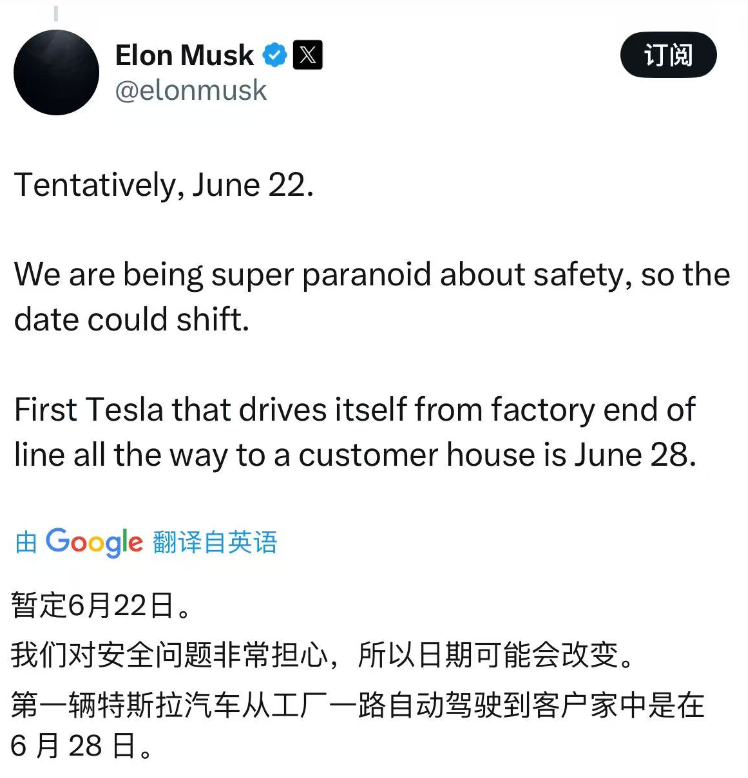
According to Musk, this trial operation will be small-scale, involving only 10 to 20 Robotaxis. The model will be the Model Y, equipped with the new "unsupervised" Full Self-Driving (FSD) technology.
The official website of the Austin Department of Transportation and Public Works also confirms that Tesla has been listed as a Robotaxi operator and, like other driverless vehicle companies, is in the "testing" phase.
With real photos of Tesla's Robotaxi now public, the much-anticipated autonomous transportation future Musk has been discussing is finally ready for public testing.
01
Essentially a Model Y
Given Musk's history of missing deadlines, he hinted that the trial operation date might still change, stating, "Due to extreme caution regarding safety, the launch date may be adjusted."
Whether it will operate as scheduled remains to be seen, but Tesla's Robotaxi is already on the road.
Shortly before Musk announced the tentative date of June 22 for public Robotaxi services, he shared a video on his platform "X".
The video shows a refreshed Model Y turning left at an intersection in Austin, notably driving in an unmanned state. Despite having a steering wheel, there is no driver in the driver's seat. Another white Model Y follows closely behind, but it does have a driver.
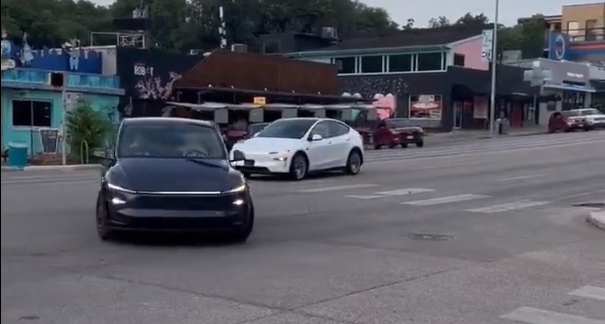
Moreover, Musk tweeted directly, "These are unmodified Tesla vehicles that come directly off the factory floor, which means that every Tesla vehicle that comes off our factory floor is capable of unsupervised autonomous driving."
From the video, this driverless Model Y looks virtually identical to an ordinary refreshed Model Y, with the only difference being a "Robotaxi" logo on the front door.
Additionally, just a few days ago, Ashok Elluswamy, head of Tesla FSD, shared several high-definition images of the Robotaxi version of the Model Y:
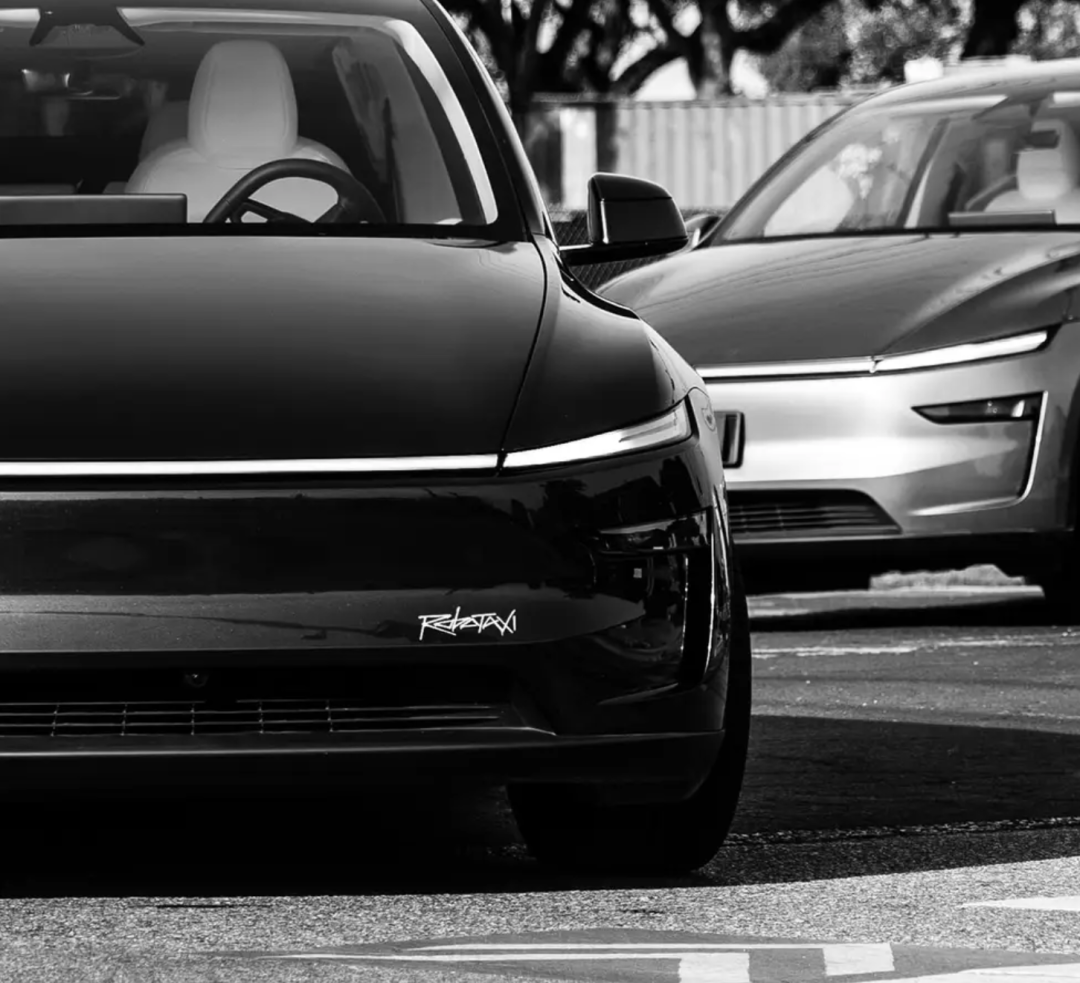
The vehicle retains the basic structure of the mass-produced Model Y but adds a "Robotaxi" logo similar to the "Cybertruck" art font to the front, doors, and rear as the only external identifier.
Even on the X platform, there has been excitement across the city to capture photos of Tesla's Robotaxi. Many bloggers have already shared videos of their encounters with Tesla's Robotaxi, mostly giving positive reviews.
For instance, overseas blogger Nic Cruz Patane commented, "The driver's seat of the Tesla Robotaxi electric vehicle being tested is unmanned. The vehicle relies on the unsupervised intelligent assisted driving system to operate very smoothly and performs excellently."
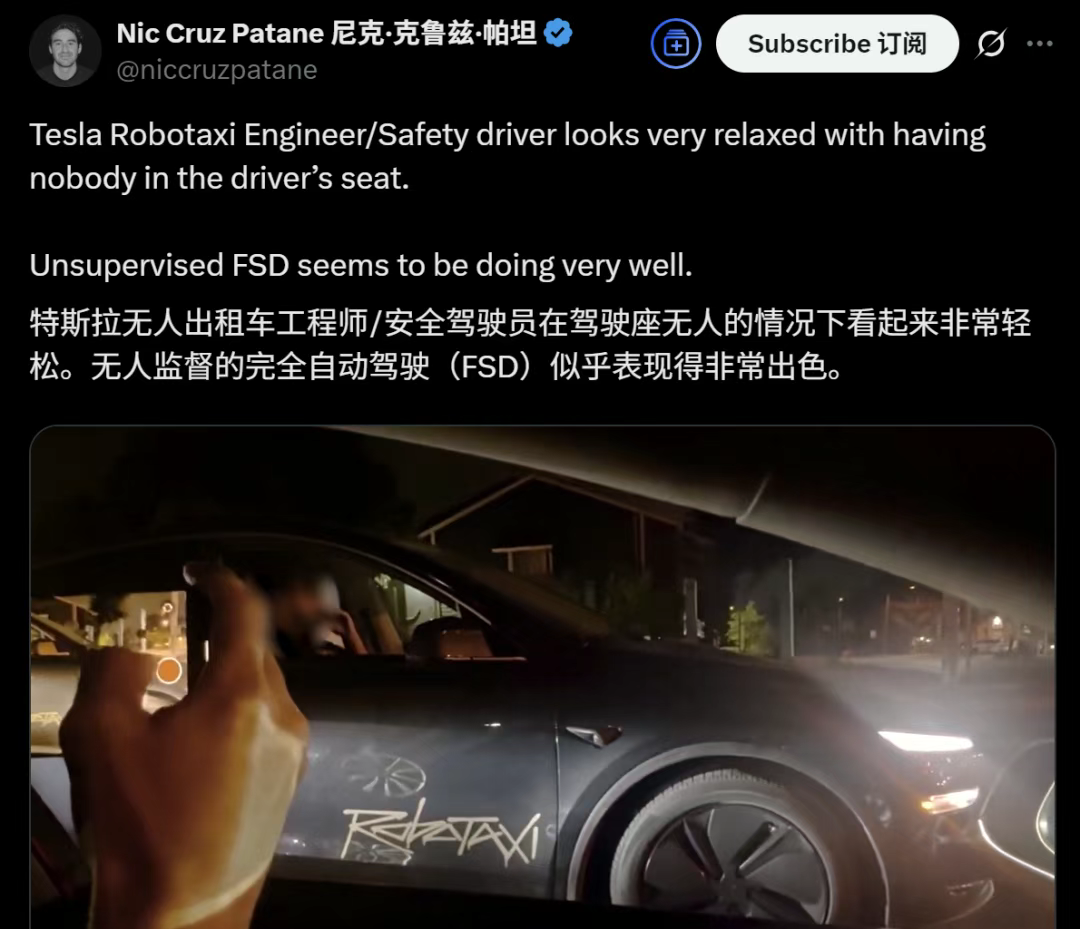
Based on this, it can be inferred that the above video likely shows Tesla conducting final-stage testing, with unsupervised vehicles traveling from point A to point B, accompanied by a safety supervision vehicle nearby.
According to Musk's plan, this trial operation is extremely cautious. First, the number of vehicles is limited to only 10-20 Robotaxi versions of the Model Y. Additionally, these vehicles are strictly confined to a specific area for invitation-only trial operations using geofencing technology.
Furthermore, each vehicle must be equipped with a remote monitoring system, allowing backend operators to intervene in real-time, and users inside the vehicle can trigger emergency braking with a single button on the in-car screen. This "limited scenario + multiple safeguards" model demonstrates Tesla's cautious approach to this trial operation.
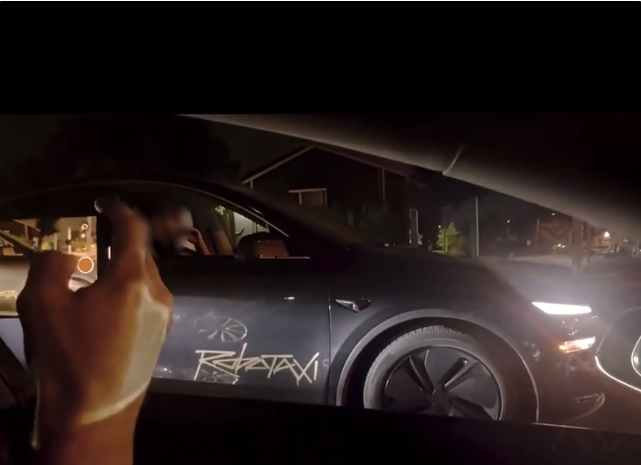
Six days after the trial operation begins, on June 28, Tesla will complete the world's first hands-off delivery of a fully autonomous vehicle – without a steering wheel or pedals, relying solely on Tesla's latest FSD software for autonomous operation, driving directly from the production line to the first customer's home.
However, it will take some time for widespread adoption.
Although the Robotaxi operating in Austin is identical to current vehicles, the FSD version on the current Robotaxi vehicles differs from that on passenger vehicles.
At the end of May, Musk revealed that the first batch of driverless Tesla Model Ys will be equipped with the latest HW5.0 hardware platform, featuring 4 4D millimeter-wave radars, 12 high-definition cameras, and a new Dojo supercomputing chip with a computing power of up to 1.1 EFLOPS, which is five times higher than that of HW4.0.
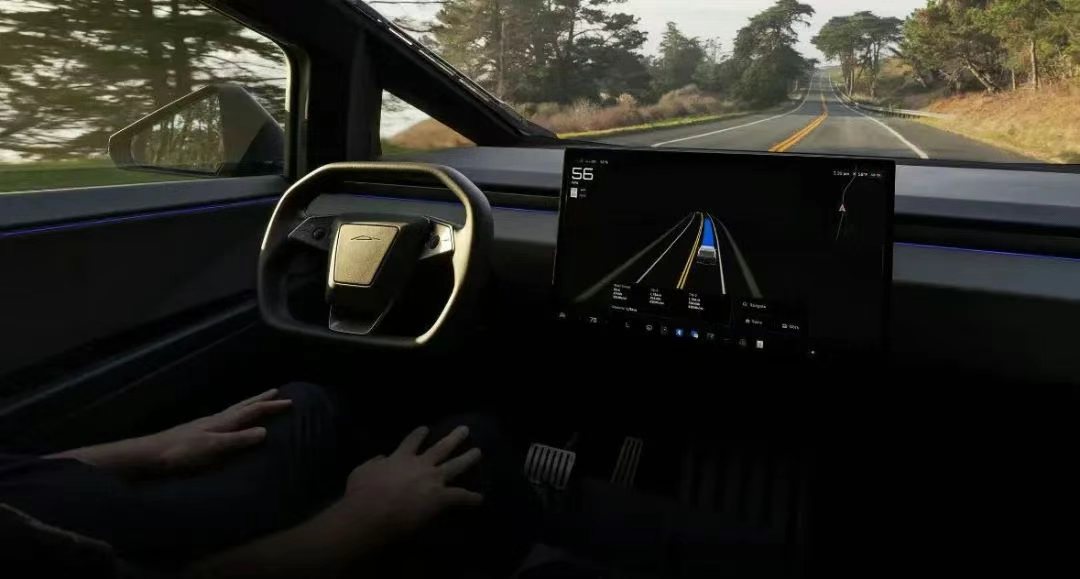
Its FSD system has also been upgraded to version V12, entering the mature application stage of the "end-to-end neural network model," significantly improving its ability to handle complex scenarios and possessing "anthropomorphic decision-making capabilities."
In addition, when replying to a netizen's question, Musk revealed that the current vehicle is equipped with a new version of FSD but that it will soon be merged into the main branch.
He then provided details about the next version of FSD, stating, "We have a more advanced model in the Alpha stage (internal testing stage)." Musk explained that this model is in the early stages of development and has more advanced performance, with parameters 4.5 times those of the current model, but the algorithms and other aspects still require significant optimization and improvement.
This indicates that Tesla is still some distance away from true Robotaxi operations.
02
Will the Vision Bear Fruit?
"When the Robotaxi platform is open to the public, anyone can hail an unmanned Model Y through the Tesla app."
This was the basic scenario for future travel that Musk initially outlined.
Whether this trial operation is successful or delayed, it marks a milestone for Tesla and signifies that the vision Musk has been discussing is starting to materialize.
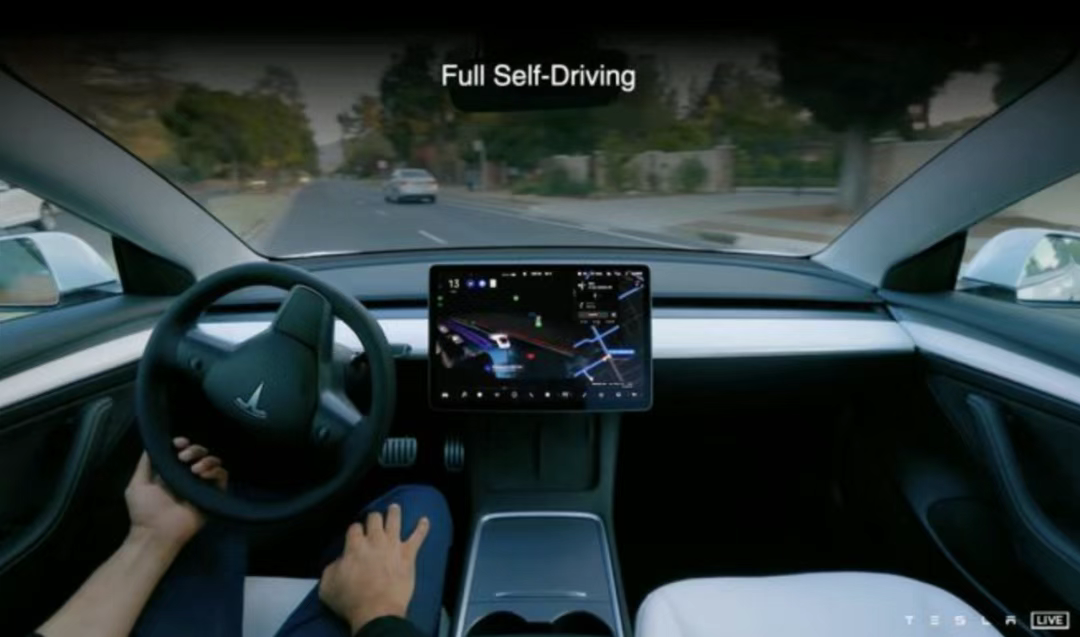
Before this, the biggest obstacle to autonomous vehicles hitting the road was not technology but approval.
You can now search for Tesla on the Texas Department of Transportation's (TxDOT) public website under "deployment of autonomous vehicles." You will find that Tesla is prominently listed, with its status as "Testing phase" clearly visible.
Moreover, on this website, you can monitor the status of all authorized vehicles, including accidents, traffic jams, and even situations where vehicles are "stuck on the road," which need to be reported to regulatory authorities within 24 hours and then made public. This is akin to installing a camera for public supervision on the Robotaxi.
Who else is on this list?
Veterans in the autonomous driving field such as Waymo and Zoox are also listed. The difference is that players like Waymo have already reached the "deployment" stage.
Tesla's inclusion on this list means that it has submitted a comprehensive set of safety materials to the state government and obtained the official status of "Testing AV operator" (Robotaxi operator).
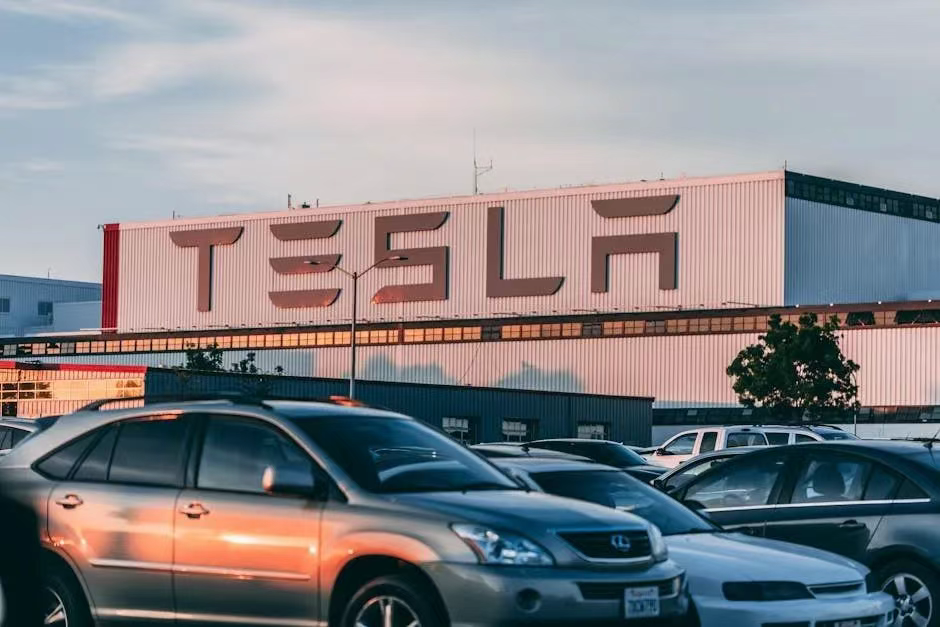
However, it is worth mentioning that after Musk announced the pilot timing for the Robotaxi, voices of opposition also emerged.
According to reports, on Thursday local time, many people gathered in downtown Austin to express concerns about Tesla's launch of autonomous taxis. Some protesters believed that there were safety issues with Tesla's partial autonomous driving system.
Encountering protests even before it has landed, it is foreseeable that Tesla's path will not be easy.
Musk, however, has a different perspective. According to his vision, Tesla not only plans to operate its own fleet but also allows private owners to integrate their Tesla vehicles with Full Self-Driving (FSD) capabilities into the Robotaxi network. Tesla owners participating in the sharing plan can earn about $0.65 per mile, while Tesla will take an appropriate commission.
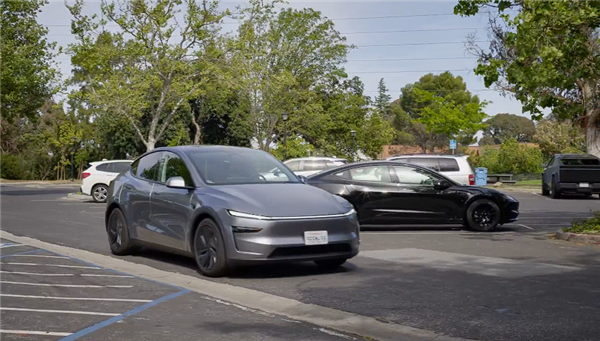
By leveraging the existing fleet and massive numbers of customer vehicles, Tesla not only significantly reduces its capital expenditures for fleet expansion and operation but also effectively transfers a large number of operating costs such as charging, cleaning, maintenance, and insurance to individual owners.
Obviously, this model is vastly different from the driverless vehicle models of Waymo, Cruise, Baidu, Pony.ai, etc. It not only enables operations at extremely low costs but also allows Tesla to generate revenue from sources beyond just selling cars.
On one hand, there is vehicle manufacturing and autonomous driving software sales, and on the other hand, there is continuous and recurring revenue generated by these vehicles in Robotaxi services.
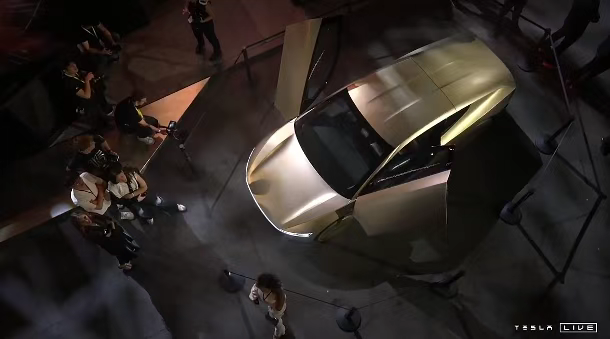
This dual model allows Tesla to capture a greater share of economic value throughout the operational life cycle of its vehicles. Musk previously predicted that the operating profit margin of its Robotaxi business will reach 70% or even higher.
At the 2024 shareholder meeting, Musk said, "Robotaxi will bring a 5 to 10 trillion dollar increase in the company's market value. Together with the contribution of the humanoid robot Optimus, Tesla's total market value will eventually reach 10 times that of Apple's current market value, exceeding 30 trillion dollars."
Multiple Wall Street analysts believe that FSD and Robotaxi business valuations account for a significant portion of Tesla's current trillion-dollar market value. If the service is successfully launched in June, it may push the stock price up; conversely, technical or operational errors will lead to significant corrections.
Similarly, Morgan Stanley's latest model shows that if the Robotaxi is launched as scheduled, Tesla's target price can be revised upwards to $300 (a 40% increase from the current price). If it is delayed, it will trigger a 23% valuation correction.
With the long-awaited Robotaxi finally emerging, can Musk turn the tide this time?







